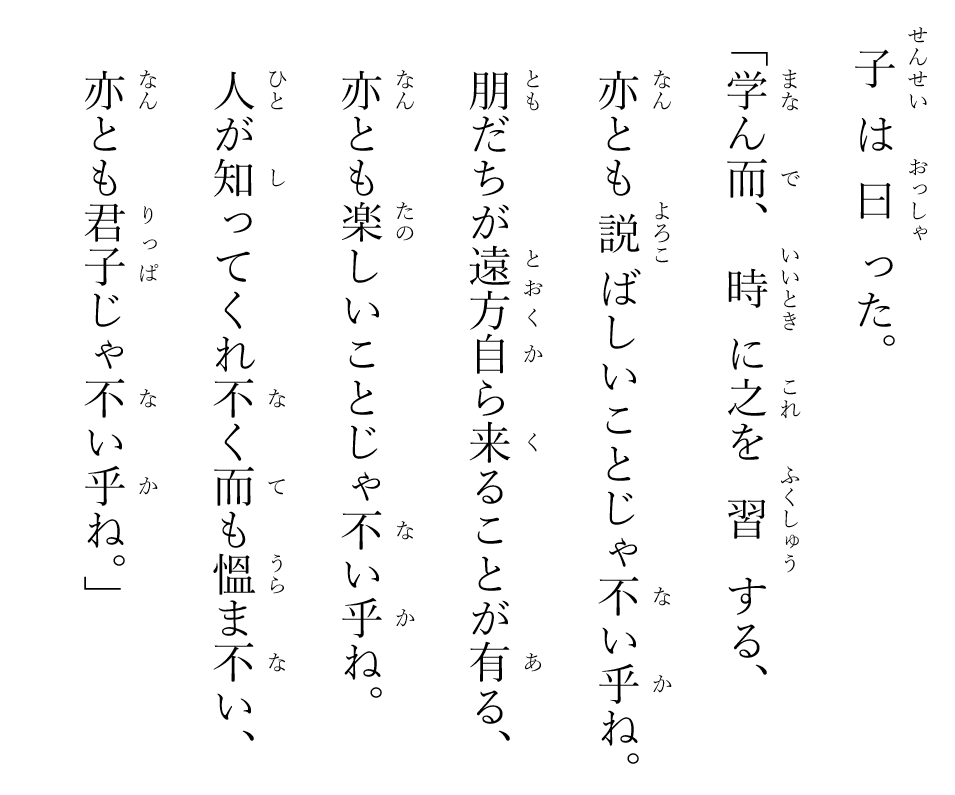Fermat's treatment of generalized parabolic quadrature
Around 1640Fermat documented this method in a awkwardly titled paper: De aequationum localium transmutatione et emendatione ad multimodam curvilineorum inter se vel cum rectilineis comparationem (On the transformation and alteration of local equations for the purpose of variously comparing curvilinear figures among themselves or to rectilinear figures, to which is attached the use of geometric proportions in squaring an infinite number of parabolas and hyperbolas).
The ideas presented in the paper was dated probably 20 years ago but it was only written in 1658, two years after the publication of John Wallis's Arithmetica Infinitorum (1656). But it was not published or circulated until 1679., 30 years before Newton and Leibniz officially “invented" calculus, Fermat managed to convinced himself that
$$\int_0^k x^n\,dx= \frac{k^{n+1}}{n+1} = L(n+1)$$
Fermat's trick was to slice the area under the curve of \(y = x^n\) into infinitely many irregular intervals so that the area of the quadrature can be approximated by rectangular slices. Then to simplify calculations, the irregular intervals are nicely chosen so that the dimensions of the bars degress from right to left geometrically, that is,
\begin{align}
\textrm{abscissa, $x$:} & \quad 0 \leftarrow \cdots \leftarrow kr^2 \leftarrow kr \leftarrow k\\
\textrm{ordinate, $y$:} & \quad 0 \leftarrow \cdots \leftarrow (kr^2)^n \leftarrow (kr)^n \leftarrow k^n
\end{align}
Apparently the choice of \(r\) will greatly affect the accuracy of the approximation. And Fermat knew he will get the best result if he allow \(r\) to approach unity. In modern notation, Fermat's thought process can be captured as:
\begin{align}
\require{cancel}
I &= \lim_{r\to 1}\left(\int_{kr}^k + \int_{kr^2}^{kr} + \int_{kr^3}^{kr^2} + \ldots \right)x^n \,dx\\
&= \lim_{r \to 1} k^n k(1-r) + (kr)^{n}kr(1-r) + (kr^2)^{n}kr^2(1-r) + \ldots \\
&= \lim_{r \to 1} k^{n+1}(1-r) \left(1 + r^{n+1} + r^{2(n+1)} + \ldots \right)\\
&= \lim_{r \to 1} k^{n+1}(1-r)\left(1 + r^{n+1} + (r^{n+1})^2 + \ldots \right)\\
&= \lim_{r \to 1} \frac{k^{n+1}(1-r)}{1-r^{n+1}}\\
&= \lim_{r \to 1} \frac{k^{n+1}\cancel{\color{brown}{(1-r)}}}{\cancel{\color{brown}{(1-r)}}(1+r+r^2 + \ldots + r^n)}\\
&= \frac{k^{n+1}}{\underbrace{\color{brown}{1 + 1 + \ldots + 1}}_{n+1\;{\rm times}}}\\
& = \frac{k^{n+1}}{n+1}
\end{align}
Many years earlier in Italy, in a slightly different treatment, Bonaventura Cavalieri was also able to work out specific cases of \(I(n,k)\) for \(n = 1, 2,
\ldots, 9\), but he was pretty sure his results can be safely extended to the general case, but he couldn't produce proof. Cavalieri's work was published in his Geometria indivisibilibus (1635). About 20 years later, Cavalieri's work was generalized to fractional values of \(n\) by John Wallis when he published his Arithematica Infinitorum in 1656Newton had a copy of Arithmetica Infinitorum, which he bought from the Stourbridge Fair. Other books acquired from the Fair includes Franz van Schooten's Miscellanies, and his translation of Descartes's La Geometrie, and William Oughtred's Clavis Mathematica..
Unlike Fermat's method, Cavalieri and Wallis's method uses regularly spaced slices: \begin{align} \require{cancel} I &= \lim_{m\to \infty}\left(\int_{0}^{k/m} + \int_{k/m}^{2k/m} + \int_{2k/m}^{3k/m} + \ldots + \int_{(1-1/m)k}^k \right)x^n \,dx\\ &= \lim_{m\to \infty}\frac{k}{m} \left[ \left(\frac{k}{m}\right)^n + \left(\frac{2k}{m}\right)^n + \ldots + \left(\frac{mk}{m}\right)^n\right]\\ &= k^{n+1} \lim_{m\to \infty}\frac{1^n + 2^n + 3^n + \ldots + m^n}{m^{n+1}}\\ &= k^{n+1} \lim_{m\to \infty}\frac{a_{1}m + a_{2}m^2 + \ldots + a_{n+1}m^{n+1}}{m^{n+1}}\\ &= k^{n+1} \lim_{m\to \infty} \left(a_{n+1} + \frac{a_{n}}{m} + \frac{a_{n-1}}{m^2} + \ldots + \frac{a_1}{m^n}\right) \\ &= a_{n+1}k^{n+1} \end{align} We know the coefficient \(a_{n+1}\) is \(a_{n+1} = \frac{1}{n+1}\) by the following summation trick on telescopic series $$(j-1)^{n+1} = j^{n+1} - \binom{n+1}{1}j^n + \binom{n+1}{2}j^{n-1} - \ldots$$ Therefore \begin{align} \underbrace{\sum_{j=1}^m j^{n+1} - (j-1)^{n+1}}_{m^{n+1}} = \sum_{j=1}^m \left[\frac{(n+1)!}{n!1!}j^n - \frac{(n+1)!}{(n-1)!2!}j^{n-1} + \ldots \right]\\ \frac{\color{brown}{m^{n+1}}}{n+1} = \sum_{j=1}^m j^n - \frac{n}{2}\sum_{k=1}^m j^{n-1} + \frac{(n-1)n}{6}\sum_{k=1}^m j^{n-2} + \ldots\\ \sum_{j=1}^m j^n = \frac{m^{n+1}}{\color{brown}{n+1}} + \frac{n}{2}\sum_{k=1}^m j^{n-1} - \frac{(n-1)n}{6}\sum_{k=1}^m j^{n-2} + \ldots\\ \end{align}
In 2002, a relatively new proof was given by N. J. Wildberger. Wildberger's proof relies on the fact that $$\int_{ac}^{ad}x^n \,dx = a\int_{c}^d (ax)^n\,dx$$ Suppose that \(A_n = \int_0^1 x^n\,dx\) and \(c = 0, d=1, k = d\), $$\int_0^k x^n \,dx = k^{n+1} A_n$$ For \(0 \le c \le 1\), we have: \begin{align} \int_{1-c}^1 x^n\,dx &= \int_0^1 x^n\,dx - \int_0^{1-c}x^n\,dx\\ &= A_n[1 - (1-c)^{n+1}]\\ &= \color{brown}{(n+1)cA_n} - \tfrac{1}{2}n(n+1)c^2A_n + \ldots + (-1)^n c^{n+1} A_n \end{align} But since the curve of \(y = x^n\) mirrors that of \(y = (1-x)^n\) around \(x = \frac{1}{2}\), we must also have: \begin{align} \int_{1-c}^1 x^n \,dx &= \int_0^c (1-x)^n\,dx\\ &= \int_0^c 1-nx + \tfrac{1}{2}n(n-1)x^2 - \ldots +(-1)^n x^n \,dx\\ &= \color{brown}{c} - nc^2 A_1 + \tfrac{1}{2}n(n-1)c^3 A_2 - \ldots + (-1)^n c^{n+1} A_n \end{align} Comparing the coefficient of their linear term gives the result we need.




Comments